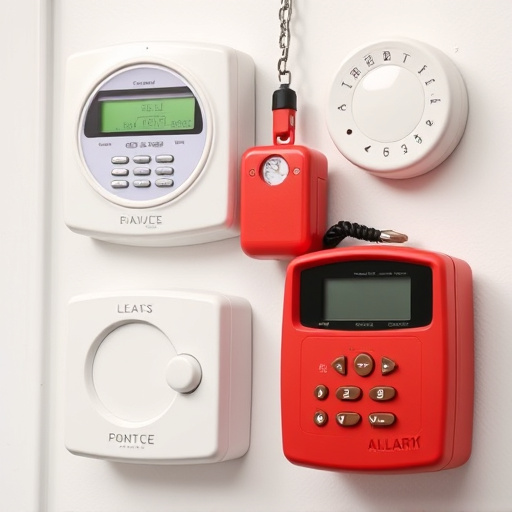Personal Safety Sirens for runners offer enhanced security with loud sounds as deterrents. Key features include long-lasting battery life, water resistance, portability, and customizable settings. Optimal siren placement at chest or shoulder level ensures maximum audibility, while prioritizing Battery Life provides continuous protection during runs, especially in remote areas.
Running is an excellent way to stay fit, but it’s essential to be aware of potential risks. Personal security alarms for runners offer a sense of protection during outdoor runs, especially in areas with limited visibility or solitude. This article explores the significance of these alarms, delving into key features like sound quality and range, while also providing insights on battery life—a crucial aspect for runners. We’ll guide you through optimal placement strategies to ensure maximum effectiveness.
- Understanding Personal Security Alarms for Runners
- Key Features to Consider in Running Alarms
- Assessing Battery Life: A Runner's Perspective
- Strategies for Optimal Personal Safety Siren Placement
Understanding Personal Security Alarms for Runners
Personal security alarms designed for runners are compact, lightweight devices that offer a simple yet effective solution for enhancing personal safety during outdoor activities. These alarms typically consist of a small siren attached to a lanyard or clip, allowing runners to carry it conveniently. When activated, the loud and piercing sound serves as a powerful deterrent against potential threats, drawing attention and alerting nearby individuals or emergency services.
One of the key considerations for runners is the alarm’s battery life, ensuring it remains functional throughout their run. High-quality personal safety sirens are designed with long-lasting batteries, often featuring rechargeable options, so runners can stay protected without constant worry about replacement or dead batteries. This feature is crucial in providing peace of mind, especially during longer or more remote runs.
Key Features to Consider in Running Alarms
When choosing a personal security alarm for runners, several key features stand out. First and foremost, look for a device with an excellent Personal Safety Siren—a loud, attention-grabbing sound that can deter potential threats and attract help quickly. Additionally, consider Battery Life: a long-lasting battery ensures your alarm remains functional during extended runs or training sessions without frequent recharging. Water resistance is another valuable trait, especially if you plan to use the alarm in various weather conditions.
Other notable features include portability and ease of use. A compact design that easily fits in a running belt or pocket is ideal, as it allows for hands-free use. Moreover, simple controls and customizable settings can enhance your experience, letting you adapt the alarm’s behavior based on your specific needs and surroundings.
Assessing Battery Life: A Runner's Perspective
When considering personal safety sirens for runners, one of the primary concerns is battery life—a crucial factor in ensuring your device stays reliable during your runs. From a runner’s perspective, a siren that runs out of power mid-route can be as frustrating as encountering an unexpected roadblock. The last thing you want is to be left vulnerable and stranded while enjoying your daily jog.
Therefore, it’s essential to look for safety sirens with robust battery life, ideally those advertised as offering several hours of continuous operation on a single charge. This way, you can rest assured that help will arrive if needed without having to constantly worry about recharging or swapping batteries during your runs. After all, the peace of mind that comes with knowing your personal safety device is always ready is invaluable in the hustle and bustle of running.
Strategies for Optimal Personal Safety Siren Placement
When considering personal security alarms for runners, optimal siren placement is key. For maximum effectiveness, the alarm should be positioned high on your body—at chest or shoulder level—to ensure it’s audible over environmental noise like traffic and music. This strategic placement also allows for easier access during an emergency, as it can be reached quickly while running.
Additionally, runners should consider the personal safety siren battery life when choosing a device. Opting for models with extended battery life ensures continuous protection throughout your runs, without frequent recharging. This feature is crucial for long-distance or trail runs where access to power sources might be limited.
Personal safety is paramount for runners, and investing in a reliable personal security alarm can significantly enhance outdoor running experiences. By understanding key features, battery life considerations, and optimal placement strategies, runners can stay secure while enjoying their passion. When choosing a device, look for long-lasting battery life to ensure you’re covered during extended runs. With the right personal safety siren, runners can navigate with peace of mind, knowing they have a powerful tool to deter potential threats.
